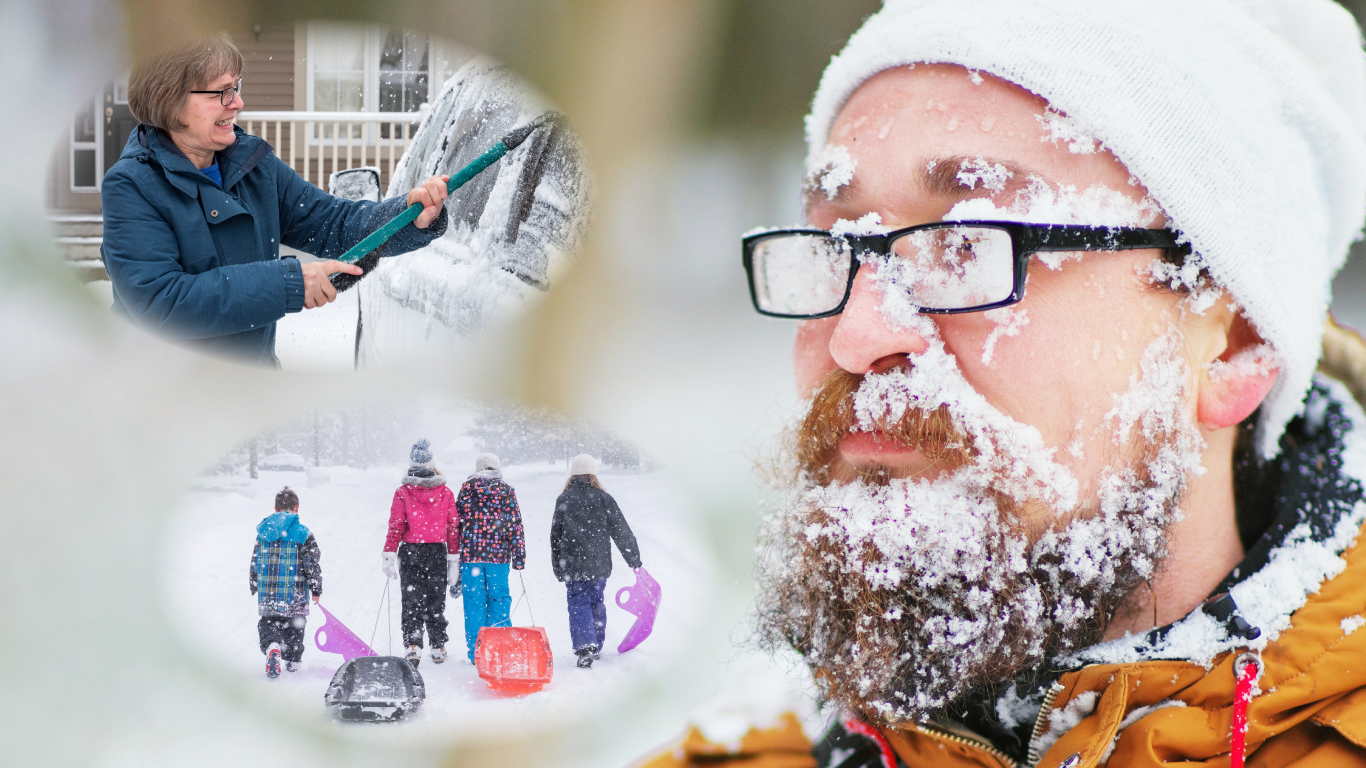
Let’s face it, Canadians have mixed feelings about snow. Some love frolicking in it, some tire of our long winters and are wary of the dangers associated with snow and ice, while others make a living from the flakey white stuff. Let’s dig into some snow-related data to mark World Snow Day.
Snow much joy
If you love snow, Canada is the place to be. In fact, almost two-thirds (65%) of Canada's land mass has annual snow cover for more than six months of the year.
For those inclined toward winter sports, the great thing about Canada is that snow is close at hand for three to four months of the year in most areas. In 2021, we asked Canadians what kind of snow-centric activities they participated in within a 10-minute journey from their home.
In 2021, 1 in 10 Canadian households reported tobogganing or sliding close to home (10%), making it the most popular snow-centric pursuit done close to home that year, followed by cross-country skiing or snowshoeing (9%); skiing, snowboarding and telemark (6%); and snowmobiling (3%).
Snow pain and perils
Snow may be fun to play in and beautiful to look at, but it can also be treacherous—even deadly—especially when it turns to ice.
Poor environmental or road conditions may influence a driver's ability to safely maneuver a passenger vehicle. Coroners and medical examiners reported decreased visibility, inclement weather or poor road conditions (e.g., icy roads, foggy weather, freezing rain, snow) in more than one in six (18%) of the 730 passenger vehicle fatalities in 2019.
Poor visibility, challenging weather or road conditions, and infrastructure issues were environmental factors reportedly involved in more than one in five pedestrian fatalities from 2018 to 2020. In some cases, challenging weather (8%), such as heavy rain or snow, blinding sun, fog, or hail, or challenging road conditions (4%), such as wet, icy or snow-covered roadways, were reported.
There’s no business like the snow business during a Canadian winter
Snow is big business in Canada.
Few businesses rely more on snow than the ski industry. In 2022, Canadian ski operators enjoyed their best winter since the onset of the pandemic, with operating revenue up 38.2% year over year to $1.3 billion, resulting in a record-high operating profit margin of 19.4%.
Since we started tracking sales of new tires in 1998, the highest sales of the year were in the fourth quarter (October to December), likely reflecting that many Canadians buy winter tires during those months. In the fourth quarter of 2022, tire sales surpassed $2.4 billion, which was 42.7% higher than any other quarter during the year and almost twice the sales reported in the first quarter of 2022.
Blowing snow
We don’t have a handle on how many Canadians shovel snow, but we do know how many own snow blowers.
In 2021, about one in four Canadian households (24%) told us they had a snow blower to clear their driveway or sidewalk, with that number rising to over half in the snow-bound cities of St. John’s, Newfoundland and Labrador, and Greater Sudbury and Barrie in Ontario.
Snow change
For those who love snow, Canadian winters are not as wintery as they used to be as a result of climate change. The Prairies, for example, have seen a 3.2°C increase in winter temperatures from 1948 to 2023.
However, the warming is most pronounced in Yukon and northern British Columbia, where winter temperatures have risen by 5.2°C over this period.
StatsCAN app
Did you know you can read StatsCAN Plus articles and more on the StatsCAN app? If you’re already using the app, let us know what you think by leaving a review in the App Store and Google Play.
Contact information
For more information, contact the Statistical Information Service (toll-free 1-800-263-1136; 514-283-8300; infostats@statcan.gc.ca) or Media Relations (statcan.mediahotline-ligneinfomedias.statcan@statcan.gc.ca).
